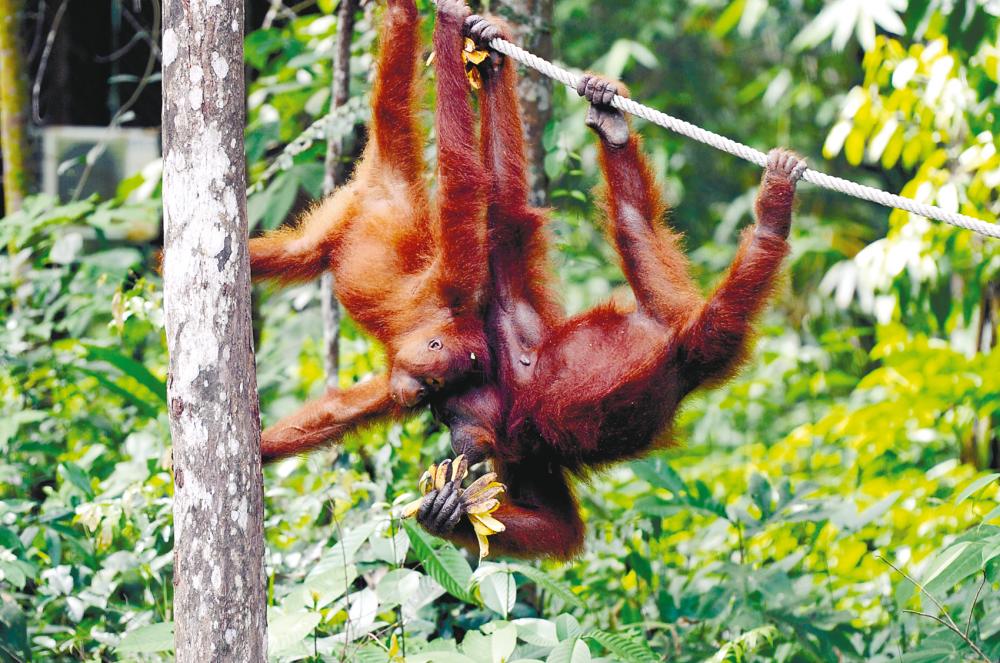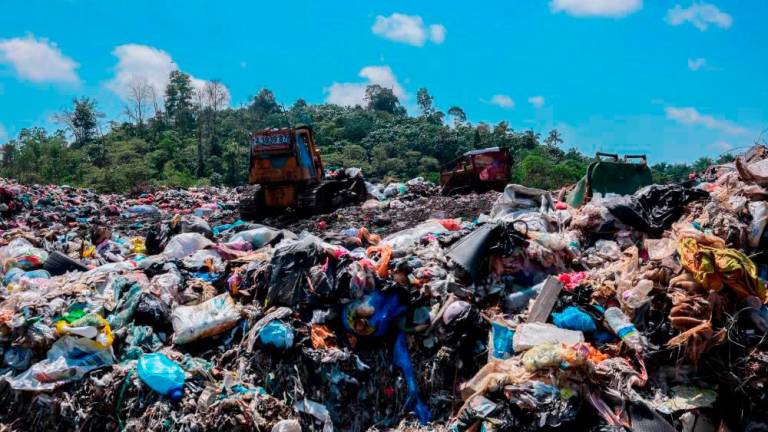IN a new scientific paper titled, “Changes to Sabah’s orangutan population in recent times: 2002-2017”, WWF-Malaysia research has found that the Bornean orangutan populations in Sabah show a mixed picture from different regions.
However, overall the research shows that they have maintained the same numbers of about 11,000 individuals over the last 15 years and can remain so as long as proper conservation management measures continue to be put in place.
Specifically, in the central forest of Sabah, in the regions of Deramakot and Ulu Segama, survey results from WWF-Malaysia’s orangutan team, led by Donna Simon, showed that populations of orangutans have remained stable over a 15-year period.
When last surveyed in 2002, it was 5,376 individuals. From the most recent survey of 2017, the population slightly increased to 5,933 individuals.
The maintenance of numbers over the 15-year period suggests that orangutan populations can be sustained in well-managed logged forests, underscoring the importance of continued conservation management in the central forests of Sabah. An important factor is the absence of hunting of orangutans in this region.
“Sabah Forestry Department is committed to conserve and protect Sabah’s iconic wildlife species and will continue to manage important wildlife habitat such as Deramakot and central Sabah forest reserves complex in accordance to Sustainable Forest Management (SFM) practices and in compliance to both national and international forest certification standards,” said Datuk Mashor Mohd Jaini, chief conservator of forests.
The survey marks the most intensive survey effort ever done on any great ape in the world and results from this survey will prove beneficial to orangutan conservation in Sabah as a whole.
WWF-Malaysia’s comprehensive survey exercise also discovered another population of at least 1,000 individual orangutans in the Imbak-Kalabakan region of southwest Sabah.
“This survey allows us to advocate a better land-use plan and identify crucial degraded orangutan habitat to be set aside for restoration and habitat connectivity or for protection.
This paper shows only a fraction of the overall orangutan conservation work that WWF-Malaysia is doing and we are glad that Sabah is on track to conserve this critically endangered species,” said Donna.
While the orangutan population has stabilised in large forest areas, their numbers declined in forest patches within oil palm landscapes of the eastern lowlands of Sabah.
The survey found that orangutan numbers have reduced by 30% and 15% respectively in Kulamba and Tabin, and showed that at least 650 orangutans had been lost from protected areas of Sabah’s eastern lowlands since 2002.
The monoculture nature of oil palm plantations means that they tend not to support species that are dependent on forest environment like the orangutan.
Nonetheless, forest patches within the plantation landscapes are important in allowing orangutans to use them as stepping stones to travel between nearby forest areas.
“This connectivity, through wildlife corridors that link patches of forest, is key to orangutan survival at oil palm plantation landscapes, especially in the lowlands of Sabah,” said Augustine Tuuga, director of Sabah Wildlife Department.
WWF-Malaysia’s study concludes that Sabah remains Malaysia’s stronghold of the Bornean orangutans, and more than 70% of our orangutans are now found in totally protected areas in the state.
While the positive numbers have shown that forest management practices are effective in ensuring orangutan conservation, it is essential that these practices are maintained to continue the survival of the species in the state.
WWF-Malaysia














